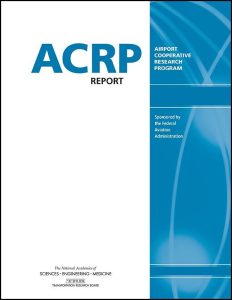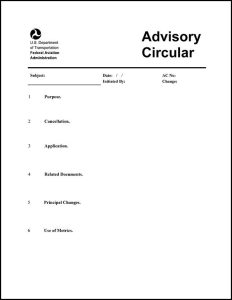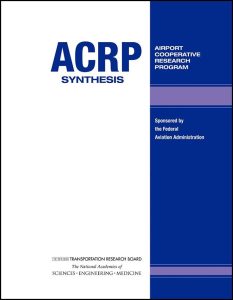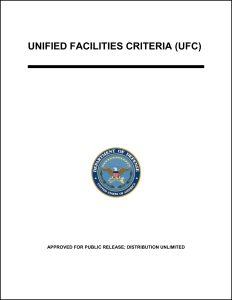To narrow the library of airside resources, use the filter boxes or airport map below or search box above.
Click an item below to expand.
Resources Matching Your Search
2013
ACRP Report 96 provides best practices for planning, designing, and marking apron areas for all sizes and types of airports in the United States. Apron planning and design considerations include facility geometrics, aircraft maneuvering, apron/airfield access points, operational characteristics, markings, lighting, and aircraft fleets. The report summarizes apron planning and design best practices for incorporating flexibility, increasing efficiency, and enhancing the safety of apron facilities.
2014
This advisory circular (AC) discusses the airport pavement management program (PMP) concept, its basic essential components, and how it is used to make cost-effective decisions about pavement maintenance and rehabilitation (M&R). The terms pavement management program (PMP), pavement maintenance-management program (PMMP), and pavement management system (PMS) are interchangeable.
2019
ACRP Report 16, second edition, is designed to help airport practitioners, owners, operators, managers, and policymakers of small airports, who may have varying degrees of experience and backgrounds, to fulfill their responsibilities in such areas as financial management, oversight of contracts and leases, safety and security, noise impacts, community relations, compliance with federal and state obligations, facility maintenance, and capital improvements. The first edition has been edited and reformatted for currency, relevance, and usability and updated with additional information and new subject areas (e.g., unmanned aircraft systems, geographic information systems, digital notices to airmen, social media, and federal and state obligations). Also, hyperlinks to many of the documents and resources mentioned in this report, such as ACRP publications, industry sources, and sample checklists, have been collected into ACRP WebResource 6: Resources for Managing Small Airports.
2011
ACRP Synthesis 22 explores how airports implement a pavement maintenance management program, including inspecting and tracking pavement conditions, scheduling maintenance, identifying necessary funds, and treating distresses in asphalt and concrete pavements.
2001
This document establishes general concepts and criteria for the design of airfield pavements for the U.S. Army, Navy, Air Force, and Marine Corps. This document prescribes procedures for determining the thickness, material, and density requirements for airfield pavements in non-frost and frost areas. It includes criteria for the California Bearing Ratio (CBR) procedure and elastic layered analysis for flexible pavements and the Westergaard analysis and elastic layered analysis for rigid pavements. The elastic layered analysis for rigid pavements covers only plain concrete, reinforced concrete, and concrete overlay pavements.
2001
This document presents criteria for the evaluation of the load-carrying capacity of pavements used (or to be used) for the support of aircraft. An evaluation is conducted to assess the allowable traffic that a pavement can sustain for given loading conditions or the allowable load for a given amount of traffic without producing unexpected or uncontrolled distress. This document is for use in evaluating U.S. Army, Air Force, Navy, and Marine Corps airfields and heliports and is applicable to conventional-type pavements. The procedures presented include direct sampling and non-destructive testing techniques. The document also describes computer programs that can be used for pavement evaluation.
2017
ACRP Research Report 178 provides information on the advantages and disadvantages of permeable pavement at airports of different types and sizes. The information includes potential installation locations, such as airside and landside applications; environmental, operational, and economic considerations; and a decision matrix to examine applicability of installations.
2019
ACRP Research Report 203 provides guidelines on the collection, use, maintenance, and application of pavement condition data at airports. Such data include conditions that are visually observed as well as those that are obtained by mechanical measurement or other means. A key part of the background study leading to this report was the development of case studies of seven airports or airport agencies on their experiences with pavement data collection, use, and management.
2008
ACRP Synthesis 6 explores how airports chemically treat their pavements to mitigate snow and ice, and the chemicals used. The report also examines the effects of pavement deicing products on aircraft and airfield infrastructure and highlights knowledge gaps in the subject.
ACRP Synthesis 96: Practices to Mitigate Alkali-Silica Reaction (ASR) Affected Pavements at Airports
2019
ACRP Synthesis 96 describes current practices for mitigating alkali-silica reaction (ASR) in affected pavements at airports. The presence of ASR on concrete pavements can have a devastating effect on pavement performance not only in terms of reduced functionality but also in terms of shortened service lives. Given the substantial initial investment required for pavements, airports are interested in using mitigations to slow the effects of ASR and prolong the life of airfield concrete pavements. This report identifies the mitigation measures used on ASR-affected airport pavements that service aircraft and summarizes the experiences and practices of airports in dealing with the distress.
2021
ACRP Research Report 234 is designed to assist airport personnel and engineering consultants in selecting and executing rapid slab repair and replacement (RSRR) projects and to provide relevant information for airport maintenance personnel performing RSRR work. Proper maintenance and repair of airfield concrete pavements is critical to the longevity of these pavements and their ability to safely support airport operations over their design life.
2008
ACRP Synthesis 11 explores the impacts of four common rubber removal methods on runways: waterblasting, chemical removal, shotblasting, and mechanical means (including sand blasting, scraping, brooming, milling, and grinding).
2019
This advisory circular (AC) provides guidelines for the development of state aviation standards for airport pavement construction at non-primary, public-use airports, as provided for in 49 United States Code (USC) § 47105(c) and 49 USC § 47114(d)(5). This AC also provides guidelines for the use of state highway material specifications for airport pavement construction at non-primary, public-use airports.
2018
This webinar discussed the development of a web-based airport pavement maintenance recommendation tool and the tool's used in helping general aviation personnel choose the appropriate treatment based on the conditions, climate, and FAA's airport classification of the facility. The presenters also provided guidance on applying permeable pavements at airports. The webinar features research from ACRP Report 159 and ACRP Research Report 178.




